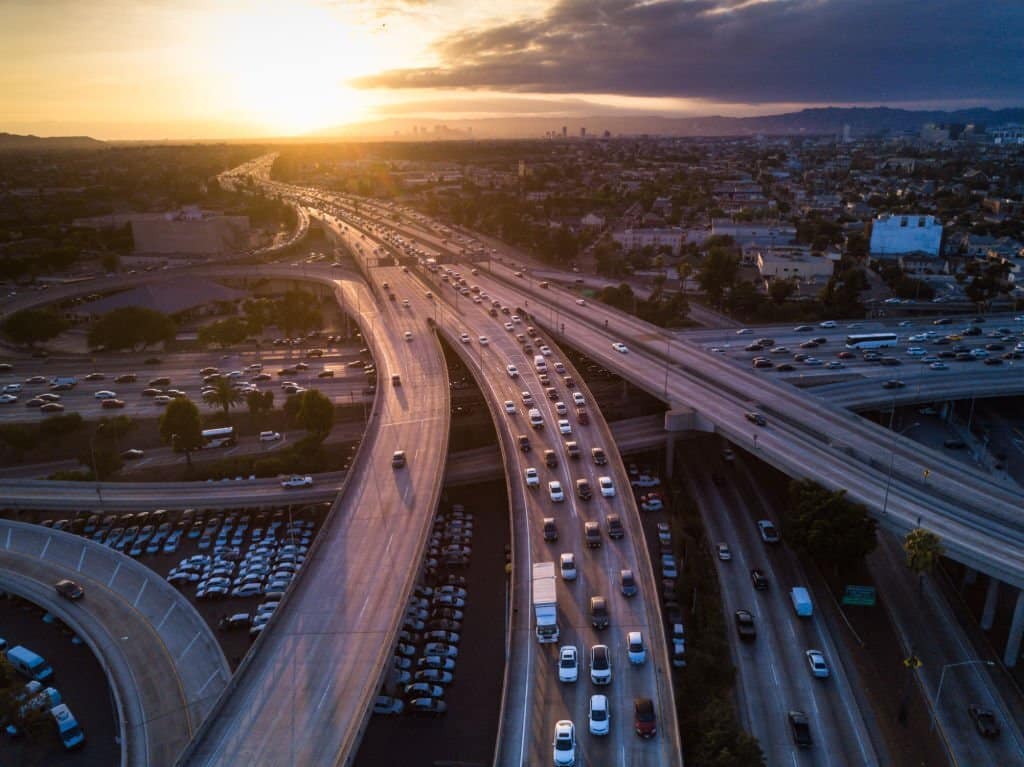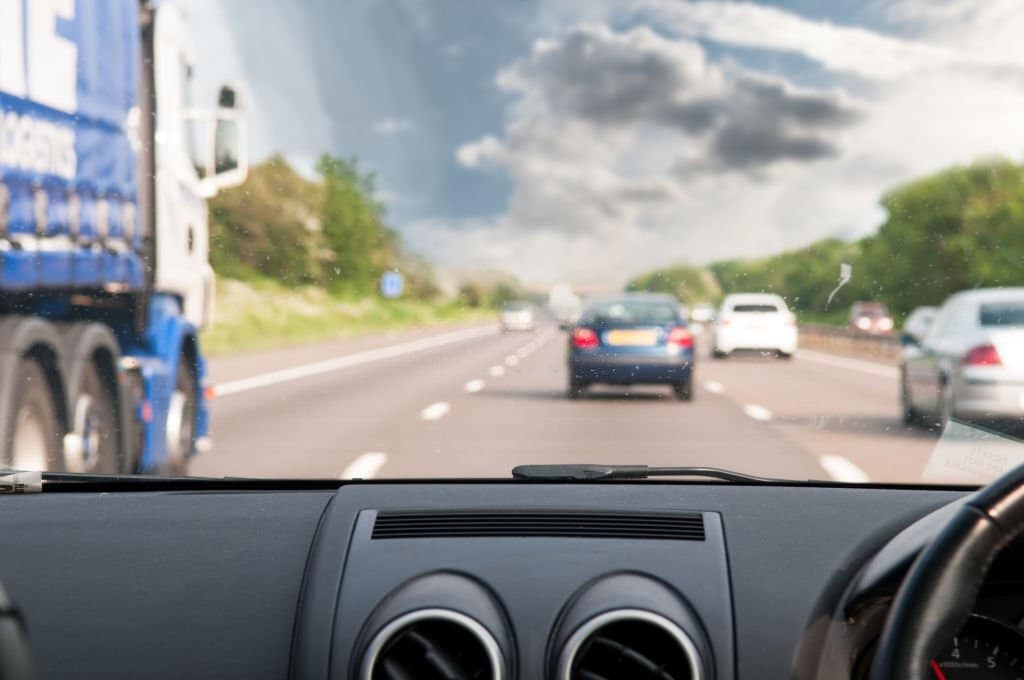
Driving on the freeway is an essential part of learning how to operate a car. You’ll save time and get to your destination faster if you are able to drive on the highway. It might seem intimidating at first, but once you understand it, it’s quite easy.
Roadways such as freeways, highways, and interstates refer to a variety of roads, each with its own characteristics. In the end, the main differences pertain to lanes, speed limits, location, and the governing body. That is responsible for building and maintaining roads. State, county, and city governments generally fund highways. In contrast, Federal Government funds the interstates which are part of the Interstate Highway System. A major purpose of interstates is to provide mobility for military operations.
Most new drivers find freeway driving challenging, especially when going through the freeway ramps. Getting into fast-moving traffic, driving 65 mph, or dealing with fast-moving, large semi-trailer trucks can be challenging and scary.
Following safe freeway driving techniques can help you be a safer driver.
Entering Or Exiting A freeway:
A vehicle can be anything from a small car to a large truck. As a result, their performance varies. All drivers should have the same chance to merge safely into the traffic flow. Regardless of how fast they are accelerating.
To merge onto the freeway from the ramp, you must travel at the same speed as the vehicles in the right lane. Slowly merging (or fast merging) with freeway traffic can lead to disaster. A majority of on-ramps are engineered so that drivers have enough time to accelerate and gain momentum before merging with the freeway so that they can accelerate as fast as they can.
You may need to change lanes or brake suddenly if you don’t match freeway speeds, causing drivers already on the freeway to brake suddenly or accelerate unexpectedly.
Following the same rules as when entering the freeway (but slowing down instead of speeding up). You should not decrease your speed until you reach the off-ramp, however. If you lower your speed while you are still technically on the freeway, as well as if you merge too slowly, it can cause problems.
The purpose of off-ramps is to slow down. Which terminates yield sign, stop sign, or stoplight. Pay attention to slower-moving traffic, pedestrians, etc., when entering a city or town.
Speed and lane selection while driving on a freeway:

Despite the fact that there are speed limits on the freeway, “limit” can be a gray area. According to the National Highway Traffic Safety Administration (NHTSA), the basic speed rule “requires vehicle operators to drive at a reasonable and prudent speed.” In other words, depending on the circumstances, it may be necessary for you to drive faster or slower than the posted speed limit.
As a result, the following are the standard guidelines for freeway driving:
- Except when passing, keep to the right
- Pass only in the farthest left lane
- You should not tailgate.
- Be careful not to drive in another vehicle’s blind spot
A freeway’s right lane is reserved for slower traffic. The right side of the lane is usually reserved for semi-trucks because they are large, slow-moving vehicles. However, the same applies to motorists traveling at a slower pace. Your lane is incorrect if traffic to your right is moving faster than you are.
Vehicles moving faster use the left lanes of a freeway. A lane on the left that is further away from the center is the passing lane, which is colloquially referred to as the “fast lane.”. It is not recommended to remain in the left lane for too long when passing another car. Eventually, someone faster will catch up to you.
If you squat in the fast lane in an attempt to slow down speeders, you may cause more harm than good. In addition to creating a backup, squatting prevents other vehicles from passing slower vehicles. Drivers will eventually go around you. A crash may occur if they change lanes too quickly.
Driving on a freeway | Freeway signs:

Signs warn of hazards and dangerous conditions in addition to speed limits, interchanges, and entrance/exit ramps. Occasionally, It is required to slow speeds due to inclines, declines, and curves.
When traveling uphill, you don’t need to go full throttle to maintain your speed, but you do need to accelerate harder, or you will begin to slow down, causing a traffic jam. The crest will eventually be reached if you keep to the right where you can safely travel slowly and do not push harder to maintain your momentum.
Keep an eye on the speedometer when going downhill. Law enforcement often sets up speed traps at the bottom of hills because steep downgrades make it easy to exceed the speed limit.
Avoid driving faster than the posted speed limit on curves if you can’t see the road ahead. On some warning signs, there is a picture of a truck tipping over. Despite the fact that a small car may be able to handle the freeway curvature faster, consider the speed limit on those signs as a guide
Road Rage and safety tips:
In a survey conducted by the American Automobile Association (AAA), most drivers admit to experiencing road rage at least once in their lives. Each day, approximately 8 million drivers are in a bad mood.
AAA reports that tailgating, yelling at another driver, and honking are the top three retaliatory behaviors. A person can be angry about a situation, but they cannot drive aggressively.
A safe and attentive driver can minimize road rage. Remember to always use your turn signal, avoid potential hazards, and stay alert while driving. The key to driving safely on the freeway is to pay attention when changing lanes or entering or exiting the freeway. Keep an eye out for motorcyclists on congested freeways. Many states allow motorcyclists to ride on the shoulder and split lanes in heavy traffic, even though it is inherently dangerous.
A vehicle breakdown or an emergency can be handled by activating the hazard lights, using your turn signals, and pulling off the highway. It is not a good idea to block traffic in the lane unless your vehicle is inoperable.
There is usually more room on the right shoulder and emergency telephones will be located there if they are available. There may be a wide berth available on the left shoulder in rural areas. Depending on your situation, choose the most accessible and safest option. Use flares and reflective triangles to increase visibility and keep an emergency kit nearby. In a similar fashion, give disabled vehicles room by moving over a lane. Many states require drivers to move over as a safety courtesy.
Driving on the freeway| The right way:
Whenever you plan your first highway drive, you should pick an appropriate location and time. When you first begin your journey, choose a highway that isn’t too congested or at a time of day when there are fewer drivers on the roads. Furthermore, you want to drive on a clear, bright day, free of rain, snow, or fog, all of which can negatively affect visibility.
Right Lane For new drivers:
The right lane is the only lane you should drive in if you are driving on the highway for the first time. Drivers under the age of 25 should not attempt to pass in the left lane. In addition to interacting with traffic coming onto the freeway, staying in the right lane helps them maintain a better speed, says Maria A. Wojtczak, owner, and operator of DrivingMBA, a business that teaches drivers.
Driving on the freeway | Changing Lanes :
When changing lanes on an interstate, it’s crucial to establish the right speed and distance. The driver should leave at least three seconds of space between his or her vehicle and that in front of them as he or she maneuvers. Ensure that the rearview, side view and blind spot mirrors are all checked regularly before switching over. The more space you have on the highway, the better your chances of avoiding a collision.
Use turn signals!:
The habit of using blinkers constantly must be instilled in young drivers, even if their intentions are obvious. In New York, Stevens Driving School has multiple locations, and Chris Duquin, the owner of Stevens Driving School, says that blinkers are the only way to communicate with other drivers. Drivers not using them on highways create a lot of problems for one .”
Parking on freeways:
If you are not in an emergency, do not stop on the pavement, shoulders, or ramps of any freeway.
Turn your hazard (emergency) lights on if your car breaks down on the freeway and pull over to the freeway shoulder to avoid oncoming traffic.
Conclusion | Driving on a freeway:
The purpose of freeways is to get us from Point A to Point B as quickly as possible. Traveling across the nation or across town is convenient and expedient with them. No matter how far you travel, the rules remain the same, and there’s no need to be intimidated by higher speeds.
It is important to practice common sense, keep a safe distance, be courteous, and avoid aggressive behavior while traveling.